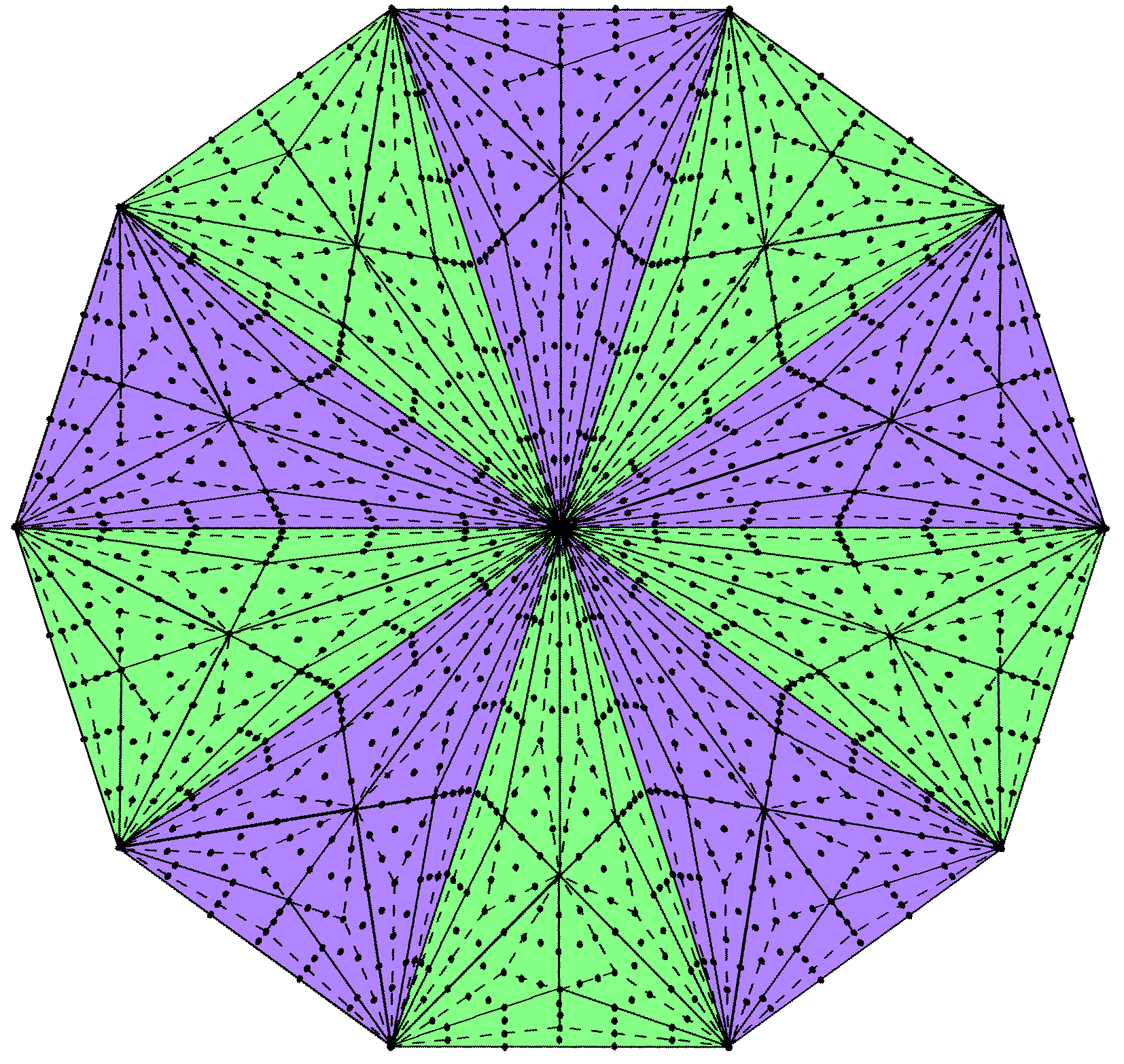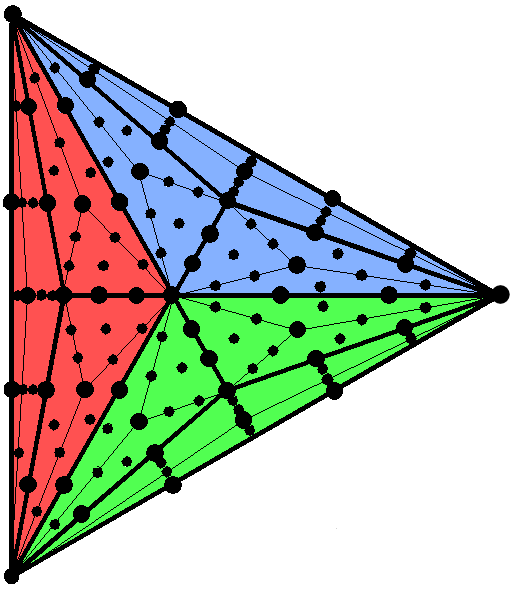
| << Previous 1... 18 19 [20] 21 22 ...81 Next >> |
#20 The Type D decagon embodies the geometrical composition of the five Platonic solids

 Type C triangle
Type C triangle
A Type C triangle has 127 yods, i.e., 123 yods outside one side. The number of yods in a Type D n-gon with Type C sectors = 123n + 1, where "1" denotes its centre. Therefore, a decagon (n=10) has 1230 yods surrounding its centre. This is the number of yods in 123 tetractyses. In the discussion in Article 50 (Part 1) of how the Fibonacci and Lucas numbers manifest in the geometry of the five Platonic solids, we found that they have 1230 geometrical elements surrounding their centres when both the polygons in their faces and their interior triangles are Type A. Hence, a Type D decagon embodies the geometrical composition of the Platonic solids, each of its yods symbolizing a point, line or triangle needed to construct their faces and interiors. This amazing property of the decagon demonstrates the significance of the Pythagorean Decad (10) as a measure of mathematically complete systems like the five regular polyhedra. Moreover, 123 is the tenth Lucas number L10 (with L0 defined as 2):
2, 1, 3, 4, 7, 11, 18, 29, 47, 76, 123, 199, 322, ...
(For the definition of Lucas numbers, see the text accompanying Fig. 4 in Article 50 (Part 1)). The Decad determines the very member of the Lucas series that determines both the yod population of a Type D decagon and the geometrical composition of the Platonic solids! The geometrical composition of each half of the Platonic solids is represented by the 615 yods in each five-fold array of either green or purple sectors of the decagon. ELOHIM with number value 50 prescribes the geometry just as it does for the 50 vertices and 50 faces of the five Platonic solids because 50 yods surrounding the centre of the Type A decagon lie on the sides of its tetractys sectors. Alternatively, the Decad determines their 50 vertices or faces because the Type A decagon has 50 hexagonal yods:
|
|
Geometrical symbol of the Decad (10), the decagon has 50 hexagonal yods. |
There are 140 corners and 410 sides of 270 triangles surrounding the centre of the Type D decagon, where 140 is the number value of Malachim, the Order of Angels assigned to Tiphareth. The triangles have 550 corners & sides, where
|
10 |
||||
| 20 | 30 | |||
| 550 = |
40 |
50 |
60 |
|
| 70 | 80 | 90 | 100 . |
550 is a parameter of holistic systems, being the number of SLs in the Cosmic Tree of Life (see here & here. See Maps of reality for how sacred geometries embody this number). For example, the faces of the five Platonic solids have 550 corners, sides & triangles when they are divided into their sectors (see Article 3, p. 9).* The number 550 = 10×55, where 55 is the tenth member of the Fibonacci series well-known to mathematicians:
1, 1, 2, 3, 5, 8, 13, 21, 34, 55, 89, 144, ....
The Decad therefore determines the geometrical composition of both the surfaces and the volume of the five Platonic solids.
* Proof
| Polyhedron | C | F | E |
Number of corners |
Number of sides E + nF |
Number of triangles |
Number of geometrical elements |
| Tetrahedron (n = 3) |
4 |
4 | 6 | 8 | 18 | 12 | 38 |
| Octahedron (n = 3) | 6 | 8 | 12 | 14 | 36 | 24 | 74 |
| Cube (n = 4) | 8 | 6 | 12 | 14 | 36 | 24 | 74 |
| Icosahedron (n = 3) | 12 | 20 | 30 | 32 | 90 | 60 | 182 |
| Dodecahedron (n = 5) | 20 | 12 | 30 | 32 | 90 | 60 | 182 |
| Total = | 50 | 50 | 90 | 100 | 270 | 180 | 550 |
| << Previous 1... 18 19 [20] 21 22 ...81 Next >> |